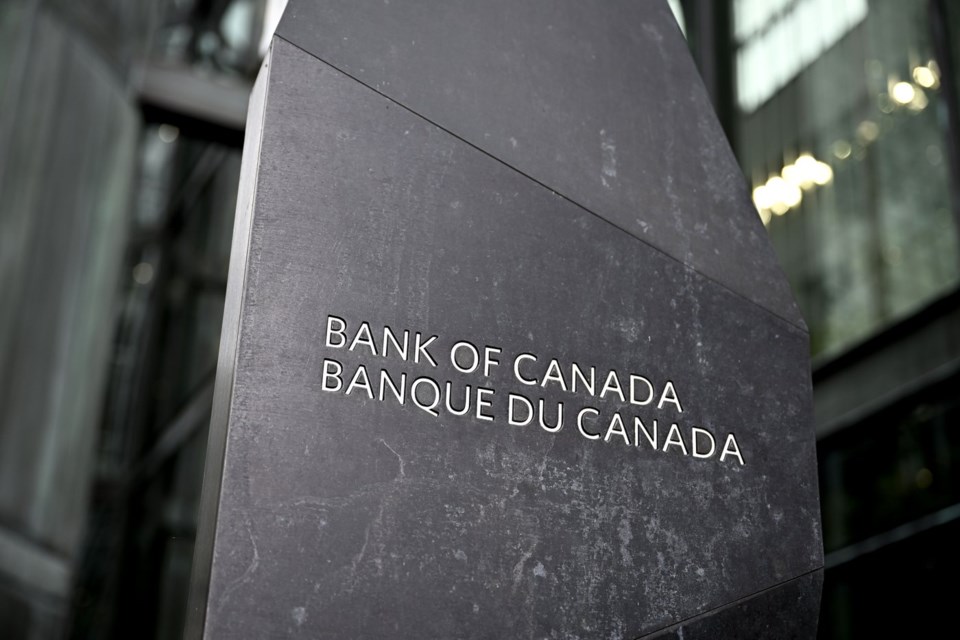OTTAWA — The Bank of sa¹ú¼Ê´«Ã½ may adjust the pace of interest rate cuts if warranted, governor Tiff Macklem said after announcing a third consecutive interest rate cut.
The quarter-percentage-point reduction was widely expected by forecasters, given ongoing softness in the economy and easing inflation.
In his opening remarks on Wednesday, governor Tiff Macklem said the central bank's decision to bring its key lending rate down to 4.25 per cent was motivated once again by continued progress on inflation and the need for growth to pick up again.
While the announcement carried no surprises, the governor signalled a willingness to change the pace of cuts, if circumstances warrant.
"If those upward forces in inflation proved to be stronger than we expected, or if there's significantly less slack in the economy than we assess, yes, it might be appropriate to slow the pace of declines," Macklem said.
"On the other hand, if the economy was significantly weaker, if inflation was significantly weaker than we expected, yes, it could be appropriate to take a bigger step, something bigger than 25 basis points."
The Canadian economy grew at a faster pace than expected in the second quarter, but preliminary data pointed to weak activity in June and July.
CIBC chief economist Avery Shenfeld noted that financial markets had placed small odds on a half-percentage-point cut, but the central bank opted to take a balanced approach.
"It’s said that victory goes to the bold, but the Bank of sa¹ú¼Ê´«Ã½ went with the more cautious approach of yet another quarter point rate cut, leaving rates still well above where they will have to head to get the economy really moving again now that inflation is less of a threat," wrote Shenfeld.
Looking ahead, Macklem reiterated that if inflation continues to ease as expected, it is “reasonable” to expect more rate cuts.
Forecasters anticipate that will mean rate cuts in both October and December — the last two decision meetings of the year.
High interest rates have helped ease price pressures across the economy, bringing sa¹ú¼Ê´«Ã½'s annual inflation rate down to 2.5 per cent in July.
And while shelter costs continue to play a major role in pushing up inflation, interest rate cuts are feeding into lower mortgage interest costs.
With the central bank’s target inflation rate in sight, Macklem has been stressing the importance of balancing the upside and downside risks ahead.
“There is a risk that the upward forces on inflation could be stronger than expected,” Macklem said.
“At the same time, with inflation getting closer to the target, we need to increasingly guard against the risk that the economy is too weak and inflation falls too much.”
TD chief economist Beata Caranci says a quarter-point rate cut was the appropriate decision, given the economy is still sending mixed signals.
But she says the downside risks are a bigger problem for the Bank of sa¹ú¼Ê´«Ã½, meaning there's a higher chance that inflation falls more than expected rather than the opposite scenario.
"We're starting to see some of the cracks forming in the job market and on the consumer side," Caranci said.
"And inflation, at two and a half (per cent), that's pretty much on target; we are quibbling over 50 basis points."
sa¹ú¼Ê´«Ã½'s unemployment rate has been climbing over the last year and a half, reaching 6.4 per cent in July. Macklem acknowledged the job market slowdown in the news conference, noting that youth and immigrants have been disproportionately affected.
The Bank of sa¹ú¼Ê´«Ã½'s next interest rate announcement is scheduled for Oct. 23.
This report by The Canadian Press was first published Sept. 4, 2024.
Nojoud Al Mallees, The Canadian Press



